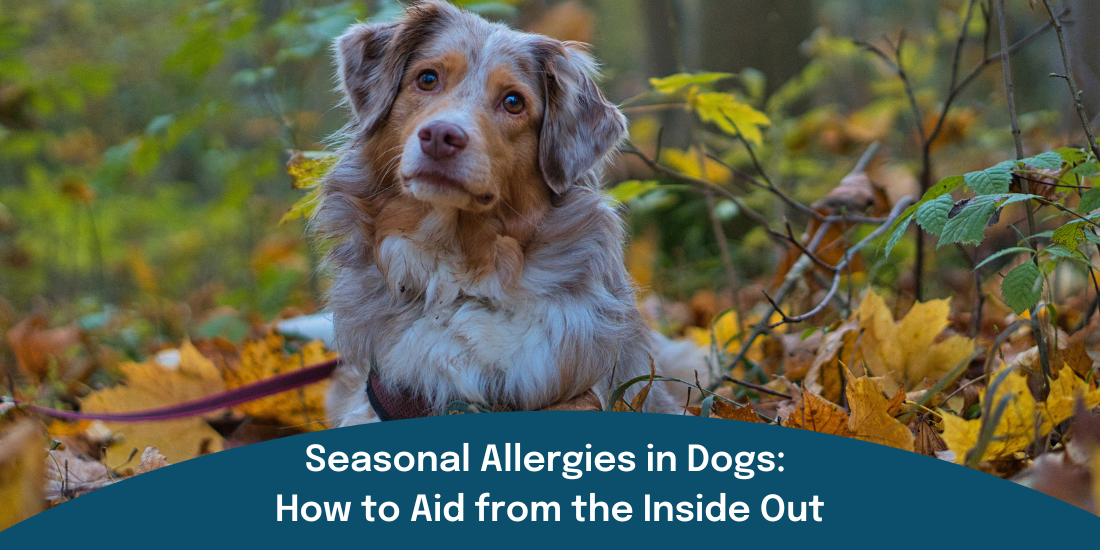
Seasonal Allergies in Dogs: How to Aid from the Inside Out
|
|
Time to read 3 min
|
|
Time to read 3 min
Eurgh, allergies…! We all hate it when it turns to “that” time of the year when the pollen is out and hay-fever is ripe. Antihistamines at the ready! But, did you know that whilst many people associate spring and summer with allergies they can continue into autumn and winter too? Different plants release allergens at different times and unless the weather gets freezing cold for a long period of time allergens can affect your pup all year round! Plus, it may be that your dog's allergies aren't caused by pollen at all.
So, let's dive into some causes, symptoms and what you can do to help your pooch all year round!
Seasonal allergies are all caused by environmental allergies however not every environmental allergy is seasonal, like dust (which is present all year round) – got it?
Is your pooch incessantly sneezing? Is there a sudden change in their behaviour? This is a sign that there is something amiss.
Quite simply, an allergy is an overreaction of the immune system to an allergen (such as pollen or dust) which the immune system sees as a threat. Histamine is released, causing reactions we all know well like inflammation, sneezing and other allergy symptoms.
Typically, you could expect seasonal allergies to set in any time from 6 months and up to 3 years of age. You would generally expect them to flare up at a specific time of year. For example, a pollen allergy would typically present throughout the spring and summer whereas an allergy to mould spores will typically happen during colder and wetter months, especially autumn when fallen leaves build up.
Make sure you know the signs of seasonal allergies to look out for. These typically are:
Is your dog sneezing all year round? This could be a sign of multiple allergies and you should book an appointment with your vet.
None of us like to see our dogs in pain or discomfort and so you will be pleased to hear that there are many home remedies available to you to help relieve itchiness, discomfort and flare-ups. Here are some great options:
There are other options which your vet can advise on including serums, steroids and anti-itch medication.
A couple of final things which can help; clean your home regularly to get rid of excess dust and build-up and change your routine. For example, avoid taking walks in the early morning / late evening when pollen is at its peak or avoid piles of leaves.
We’ve discussed seasonal and environmental allergies but there are many other common dog allergies which can impact on your dog’s health which you need to be aware of. In a study by Banfield Pet Hospital, 3.6% of observed dogs had environmental allergies, and this number was on the rise.
The same study found that 1.8% of dogs had a flea bite allergy or flea allergy dermatitis as it’s more commonly known. Look out for fleas or flea debris (little specks of dried blood) in your dog’s coat. Just 0.2% had a food allergy.
Typically food allergies develop because your dog is a little sensitive to certain proteins such as chicken, beef or pork.
There is no cure for seasonal allergies, but the condition can be managed. Try your best to avoid allergens and address your dog’s symptoms. Working with your vet will help identify the underlying cause.
Hopefully by implementing some of the techniques we have discussed today, you can help to keep your dog happy, healthy and comfortable.